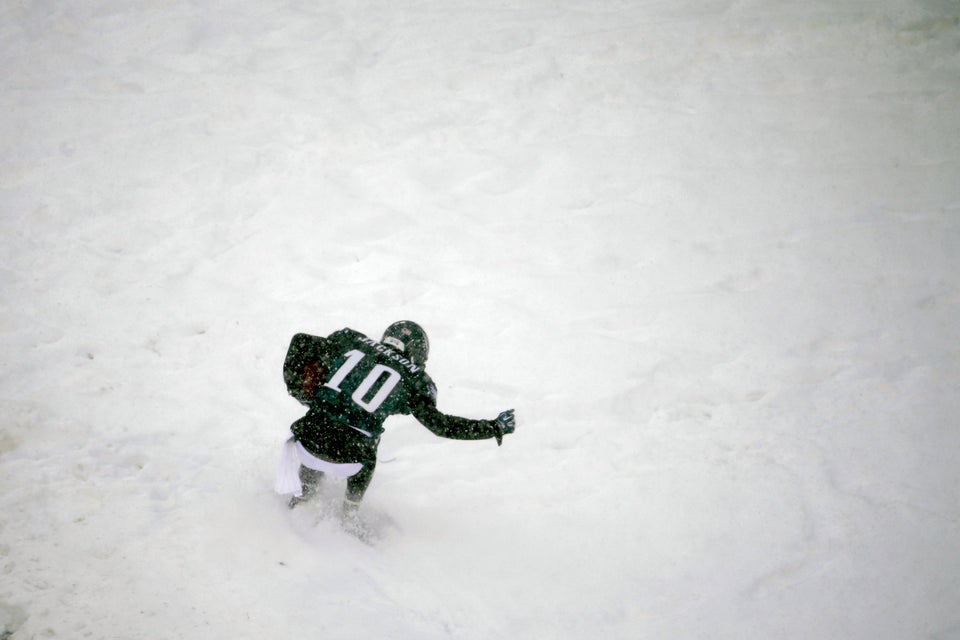
The PGA Tour and PGA of America boards have formally decided to abide by the U.S. Golf Association’s ban on anchored strokes, effective Jan. 1, 2016.
While the Tour’s nine-man policy board’s decision July 1 to follow Rule 14-1b was expected, there had been speculation the Tour might disallow anchored putting earlier, such as at the start of the 2015-16 season, in an effort to limit distraction. But instead it chose to follow the new USGA rule to the letter, apparently in part for legal reasons.
“If we stop playing by USGA rules, that really opens it up to litigation (by players who anchor in this case),” said Paul Goydos, a player-director on the policy board.
As it is, a group of at least nine players who anchor have retained Boston lawyer Harry L. Manion III. The players, including Tim Clark and Carl Pettersson, had been waiting for the Tour’s decision. While the Tour board July 1 didn’t discuss a possible legal challenge, Goydos said a lawsuit “would certainly seem like a logical step.”
The Tour and PGA also strongly recommended the USGA consider pushing back the ban date for amateurs several years. Both organizations pointed out that the USGA in 2008 followed a similar course regarding new groove configurations on golf clubs – 2010 for elite play but 2024 for recreational golfers.
“The policy board continues to believe that extending the time period the ban would go into effect for amateurs would be beneficial for golf participation and the overall health of the game,” Tour commissioner Tim Finchem said.
The Tour and PGA of America have made similar recommendations to the USGA in recent months, to no avail. As Goydos said after the Tour board meeting of about five hours, “They’ve asked on numerous occasions. The USGA has been consistent saying no, but in this case the board said, ‘Ask again.’ ”
Asked whether the USGA might concur this time, PGA president Ted Bishop said, “I hope they give it strong consideration. It’s a fair ask. It’s a compromise.”
The USGA, through a spokesman, would not comment. A message left on Manion’s office telephone was not returned.
The USGA and R&A jointly announced the proposed ban on anchored strokes in November 2012. Then, after a 90-day comment period, they announced May 21, 2013 that the ban would start in 2016.
The Tour and PGA were the leading organizations opposed to the ban. But they chose to follow the USGA because they didn’t want to get into the rules-making business. The PGA board met June 24 but didn’t announce its decision to comply until after the Tour meeting.
“If there would be two sets of rules, I don’t think we’d be interested in making the second set,” said Bishop, who sits on the Tour board. “When it became apparent the Tour was not interested in doing it, that ended that.”
Tour events are conducted under USGA rules, though the policy board reserves the right to make modifications. The Tour chose not to modify this time because “having a single set of rules on acceptable strokes applicable to all professional competitions worldwide was desirable and would avoid confusion.” Finchem also said the ban won’t “fundamentally affect” Tour success or competition.
Finchem and Bishop stressed that their organizations would like to be involved in initial discussions on possible USGA rules changes. Bishop urged that the rules-making process be “open and transparent.”
“It is not inconceivable that there may come a time in the future when the policy board determines that a rule adopted by the USGA, including in the area of equipment, may not be in the (Tour’s) best interests and that a local rule eliminating or modifying such a USGA rule may be appropriate,” Finchem said. “Having said that, we have been assured by the USGA that as we move forward we will have an open and effective communication process on a number of levels with (USGA) decision makers.”
• • •
Other coverage
Acting "for the Good of the game," the USGA and R&A announced the adoption of Rule 14-1b, which prohibits anchoring the club in making a stroke.
Tim Clark is waiting for the PGA Tour to announce its position regarding the application of Rule 14-1b. But he's already explored legal options if the decision isn't favorable to players like him who practice anchoring.
PGA of America on anchoring: "Although we do not agree with the decision, we applaud the USGA for its willingness to listen to our concerns and engage in meaningful discussions."
Three prominent touring pros who use the anchoring stroke with long or belly putters – Tim Clark, Carl Pettersson and Adam Scott – were disclosed to have retained legal counsel.
